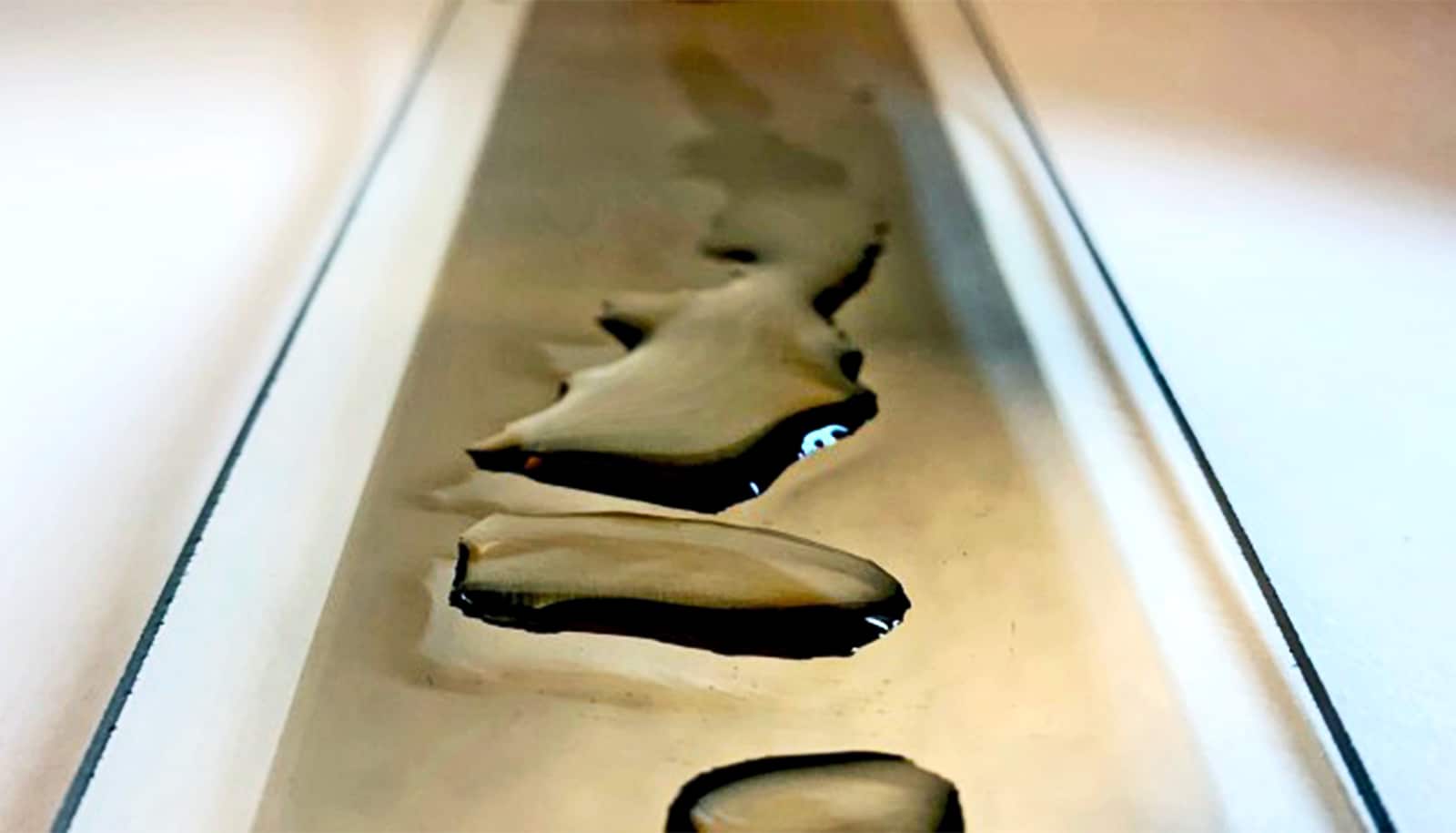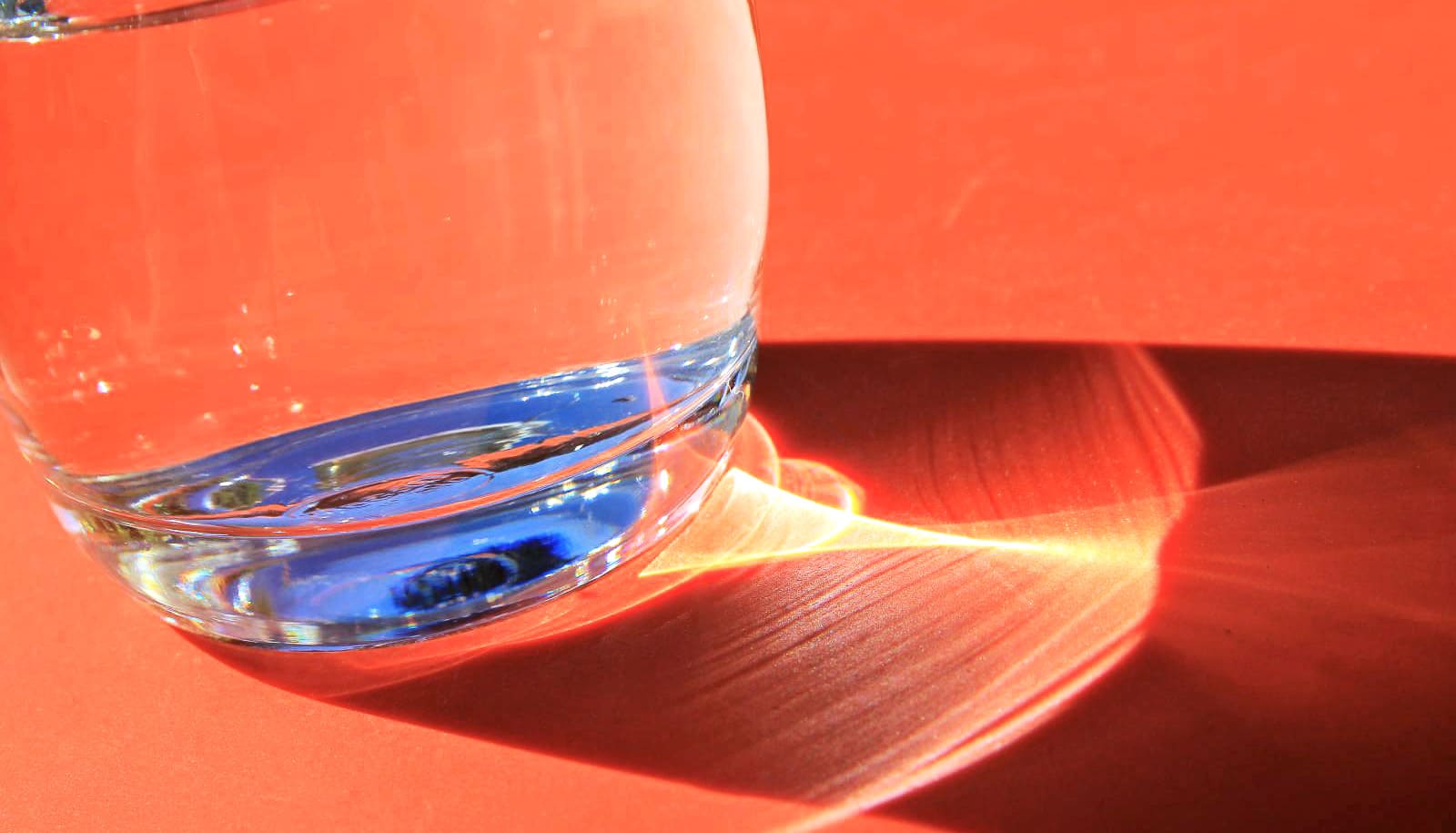Flowing water over extremely thin layers of inexpensive metals that have oxidized, including iron, can produce electricity, researchers report.
The technique could be useful in developing new forms of sustainable power production.
The films have a conducting metal nanolayer (10 to 20 nanometers thick) insulated with an oxide layer (2 nanometers thick). Pulses of rainwater and ocean water alternate and move across the nanolayers to generate the current. The difference in salinity drags the electrons along in the metal below.
The power of metal nanolayers
“It’s the oxide layer over the nanometal that really makes this device go,” says Franz M. Geiger, professor of chemistry in Northwestern University’s Weinberg College of Arts and Sciences. “Instead of corrosion, the presence of the oxides on the right metals leads to a mechanism that shuttles electrons.”
The films are transparent, a feature that solar cells could take advantage of. The researchers intend to study the method using other ionic liquids, including blood. Developments in this area could lead to use in stents and other implantable devices.
“The ease of scaling up the metal nanolayer to large areas and the ease with which plastics can be coated gets us to three-dimensional structures where large volumes of liquids can be used,” Geiger says.
“Foldable designs that fit, for instance, into a backpack are a possibility as well. Given how transparent the films are, it’s exciting to think about coupling the metal nanolayers to a solar cell or coating the outside of building windows with metal nanolayers to obtain energy when it rains.”
How does it work?
The new method produces voltages and currents comparable to graphene-based devices reported to have efficiencies of around 30%—similar to other approaches under investigation (carbon nanotubes and graphene) but with a single-step fabrication from earth-abundant elements instead of multistep fabrication. This simplicity allows for scalability, rapid implementation, and low cost.
Of the metals studied, the researchers found that iron, nickel, and vanadium worked best. They tested a pure rust sample as a control experiment; it did not produce a current.
The mechanism behind the electricity generation is complex, involving ion adsorption and desorption, but it essentially works like this: The ions present in the rainwater/saltwater attract electrons in the metal beneath the oxide layer; as the water flows, so do those ions, and through that attractive force, they drag the electrons in the metal along with them, generating an electrical current.
“There are interesting prospects for a variety of energy and sustainability applications, but the real value is the new mechanism of oxide-metal electron transfer,” Geiger says. “The underlying mechanism appears to involve various oxidation states.”
The team used a process called physical vapor deposition (PVD), which turns normally solid materials into a vapor that condenses on a desired surface. PVD allowed them to deposit onto glass metal layers only 10 to 20 nanometers thick. An oxide layer then forms spontaneously in air. It grows to a thickness of 2 nanometers and then stops growing.
“Thicker films of metal don’t succeed—it’s a nano-confinement effect,” Geiger says. “We have discovered the sweet spot.”
When tested, the devices generated several tens of millivolts and several microamps per centimeter squared.
“For perspective, plates having an area of 10 square meters [107.6 square feet] each would generate a few kilowatts per hour—enough for a standard US home,” Miller says. “Of course, less demanding applications, including low-power devices in remote locations, are more promising in the near term.”
The paper appears in PNAS.
Northwestern has filed for a provisional patent for the technology. Additional authors are from Northwestern and Caltech. The National Science Foundation, the Office of Naval Research, and the Defense Advanced Research Projects Agency, through the Army Research Chemical Sciences Division supporte4d the work.
Source: Northwestern University


